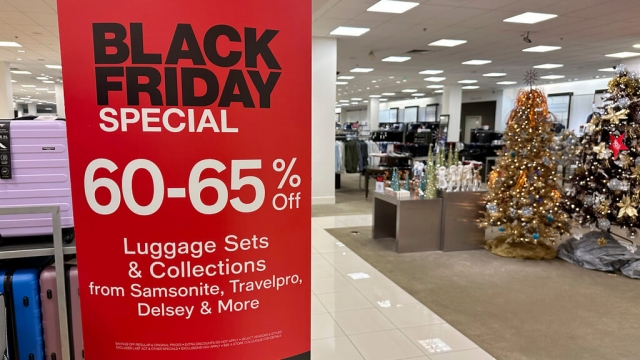For decades, Black Friday has been a hugely popular unofficial holiday in the U.S. and even overseas.
The shopping event has expanded into a full weekend of promotions, with deals starting earlier and ending later in the week than ever before.
Additional events, like Cyber Monday and Small Business Saturday, have been added to the spree.
The National Retail Federation says nearly 200 million Americans last year shopped over the five days between Thanksgiving and Cyber Monday. That's the highest since they began tracking data.
While the number of Black Friday shoppers slowly ticks up, the holiday itself has changed dramatically in stores over the years.
Originally, the term Black Friday didn't even refer to a retail event.
The phrase was reportedly coined by Philadelphia police and transport workers, referring to the day before the annual Army-Navy football game.
No traffic police were allowed to take the day off, and there was heavy traffic and crowds as visitors began their shopping season.
SEE MORE: The holiday shopping season kicks off this weekend
According to the Philadelphia Inquirer, the first media appearance of the term was a November 24th, 1961, article featuring a cartoon of Santa Claus winding up a traffic cop for the holiday rush.
Retailers began to capitalize and try to rebrand Black Friday into something positive. Decades later, the sensation became a Thanksgiving staple.
By the 2010s, retailers began opening their doors earlier—from midnight to late night to as early as 8 p.m. on Thanksgiving the day before.
The doorbuster deals were famous for long late-night waits and, in extreme cases, fights over goods.
But the mad dash has gone in reverse, thanks in large part to the boom of online shopping.
Adobe Analytics found U.S. shoppers spent a record $9.8 billion online on Black Friday. Cyber Monday has also seen a steady increase from recent years, and Adobe predicts it's expected to be the year's top shopping day, with an estimated $12 billion in spending.
COVID- 19 concerns and supply chain issues also led to less foot traffic in stores. Some observers say the in-person Black Friday rush has never recovered.
That's reflected in bustling lots turning to empty ones on Thanksgiving night, with more retailers saying they won't open for the holiday.
In addition, stores continue to struggle with staffing.
The Black Friday shopping spree has changed dramatically over the years. But the staple of the American holiday season lives on with a different look than in seasons past.
Trending stories at Scrippsnews.com



